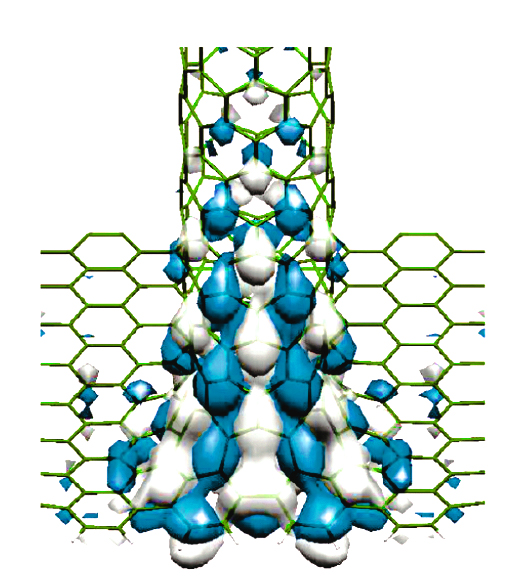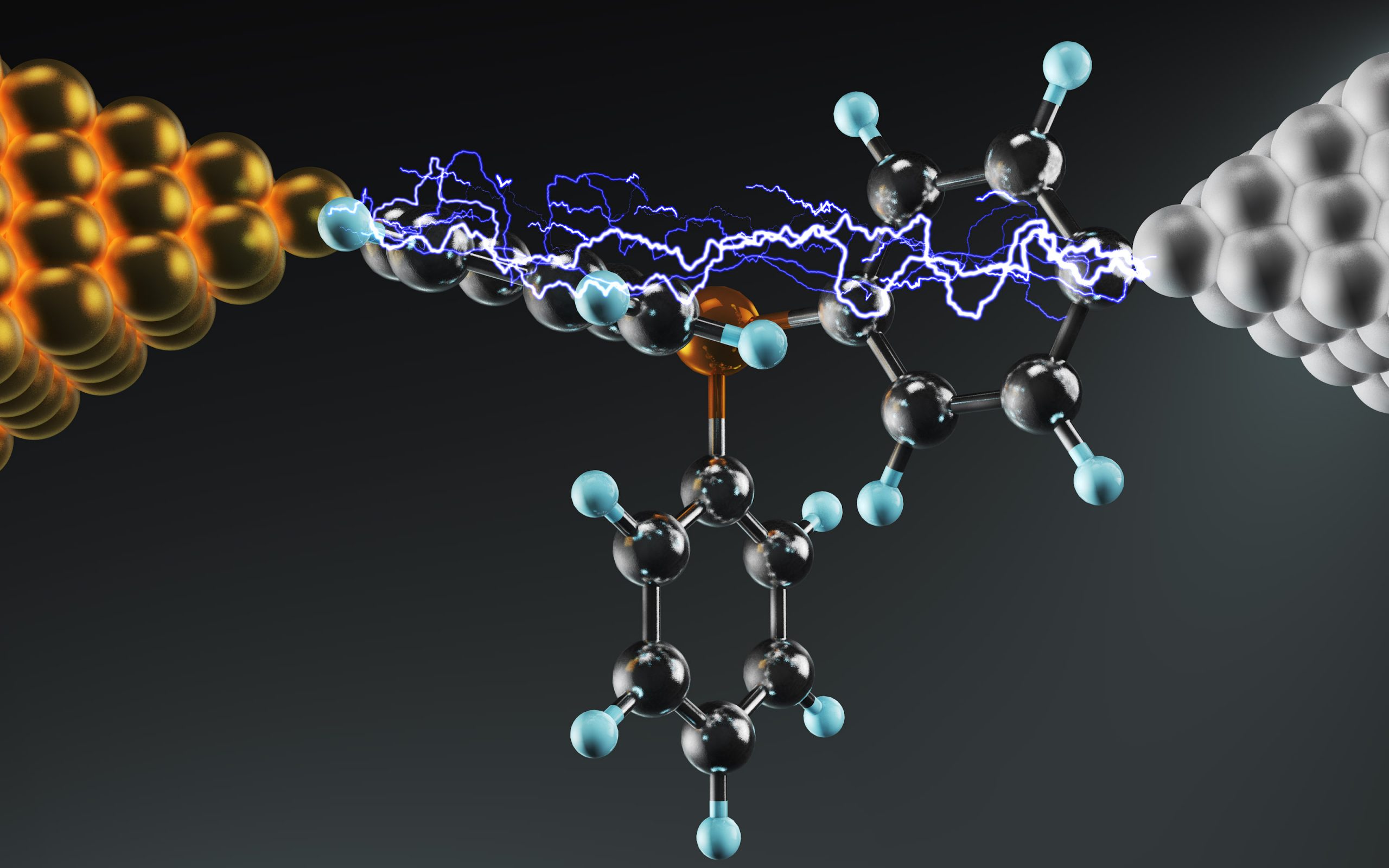
WHAT IS TRANSIESTA?
A correct description of electronic transport at the nanoscale is crucially important for the design of modern electronics devices because at the nanoscale semiclassical transport concepts fail due to the prevalence of quantum effects.
TranSIESTA is the implementation of non-equilibrium electronic transport in SIESTA and can be accessed within a standard SIESTA package. TranSIESTA computes electronic transport properties, such as the zero-bias conductance and the I-V (current-voltage) characteristic of a nanoscale system being in contact with two electrodes with different electrochemical potentials.

WHAT DOES TRANSIESTA DO?
TranSIESTA solves the electronic structure of an open system formed by a finite structure sandwiched between semi-infinite metallic leads. A finite bias can be applied between the leads, to drive a finite current. The method is described in details in N. Papior et al., “Improvements on non-equilibrium and transport Green function techniques: The next-generation TranSIESTA” Comp. Phys. Comm. 212, 8 (2017). In practical terms, calculations using TranSIESTA involve the solution of the electronic density from the DFT Hamiltonian using Green’s functions techniques, instead of the usual diagonalisation procedure. Therefore, TranSIESTA calculation involves a SIESTA run, in which a set of routines are invoked to solve the Green’s functions and the charge density for the open system. This approach can efficiently be parallelised, and algorithms can be implemented, which displays O(N) scaling behaviour.
TranSIESTA FEATURES
- Relaxation of the atomic configuration to the energy minimum.
- Modelling the molecule-electrode system from first principles.
- Modelling infinite electrodes.
- Consideration of finite bias voltage/current and determining the potential profile.
- Calculation of the conductance, i.e. quantum transmission through the molecule in linear and nonlinear regimes.
- Information on scattering states, transmission coefficients, electron current and non-equilibrium forces in the system.
TranSIESTA TUTORIALS
SIMUNE has created a number of tutorials on TranSIESTA. Please find them here.
ICMAB TranSIESTA tutorials by P. Ordejon and N. Papior are available here.
TranSIESTA tutorials created by G. Calogero, N. Wittemeier, Z. Zanolli, S. Sanz, T. Frederiksen, M. Brandbyge, P. Ordejon, E. Freitas Martins, P. Febrer, and N. Papior are available on GitLab.
CASE STUDIES
SIMUNE Team has prepared several case studies demonstrating the capability of the SIESTA and TranSIESTA codes. Please visit SIMUNE Case Studies page to find out more.
HOW TO CITE TranSIESTA?
Would like to try ASAP trial?
Make a request.



